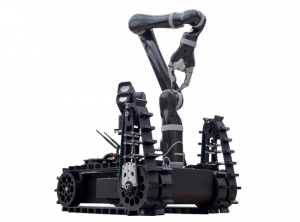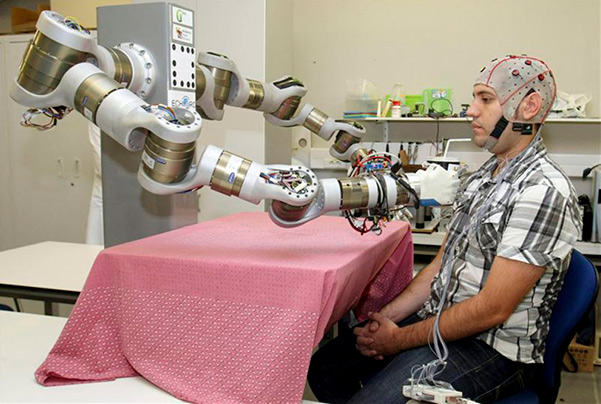Some researchers at the Miguel Hernández University of Elche, Valencian Community, are working for more than a year in the development of a robot whose movements are controlled from the brain activity of a person.
The aim of this work is to improve the quality of life for people with limited mobility in their hands due to accidents or severe disabilities.
Although research initially focused on making the robot perform everyday activities such as bringing objects or help in feed somebody, the challenge goes beyond marking.
Turn on the light, control television channels, raise or lower a shutter, or call someone only with the thought, are some of the functions that these researchers have been marked for the future.
For over a year a team led by the director of Systems Engineering and Automation of the UMH, José María Azorin, working on the development of this robot to be controlled from the brain activity of the person.
Currently, the development of this work has allowed this robotic device with already two arms and two hands, as Azorin has assured.
The system uses surface electrodes placed on the head of the person, as if it were an EEG, and its sensors are able to detect the activity of neurons.
In this way, the collected information is encoded through algorithms that translate the commands to the robot so that, for example, it can perform daily activities such as picking up a glass of water and drink or help to feed the disabled person.
According to the director of the Biomedical Neuroengineering of UMH, Eduardo Fernandez, it is intended that a person who has a disease, such as multiple sclerosis or spinal cord transaction, he could be in somehow “independent “.
The project is still in a development phase, with the intent to understand and validate this technology in healthy people, and then implement it in simpler devices, smallest and affordable for the public, because, Fernandez said, “a robot is expensive and may not be available to everyone “.
This work also involved research groups from all over Europe who have the advice of final users and their families, as well as medical specialists.
The research process is long-lasting and the technology involved is very expensive, so the working team has not marked a deadline, and they have said that it will be necessary a lot of time before a final user will be able to use it.



